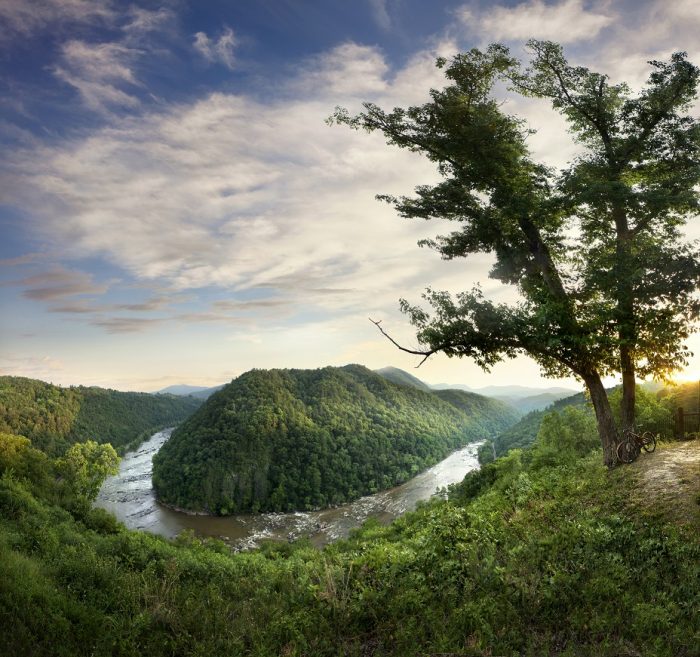Ninety-seven of the state’s 100 counties saw increases in visitor spending in 2016.
Visitor spending topped $5 billion in Mecklenburg, $2 billion in Wake and $1 billion in Guilford, Dare and Buncombe counties. Rounding out the top 10 counties for visitor spending were Forsyth ($846 million), Durham ($775 million), New Hanover ($554 million), Brunswick ($544 million) and Cumberland ($525 million).
Domestic visitors spent a record $22.9 billion statewide in 2016, an increase of 4.4 percent from the previous year. State tax receipts as a result of visitor spending neared $1.2 billion in 2016, and local tax revenues directly resulting from visitor spending totaled more than $693 million. Visitor expenditures directly supported 219,094 jobs and generated nearly $5.6 billion in payroll income across North Carolina.
 “Tourism serves as a specialized economic development engine that fuels North Carolina’s economy,” said Tammy O’Kelley, chairwoman of the North Carolina Travel and Tourism Board and executive director of the Randolph County Tourism Development Authority. “A positive tourism economy is critical to our state’s overall economic health, and is made possible by our dedicated tourism partners who work hard every day to make sure that from the mountains to the Piedmont and the coast, North Carolina remains a destination of choice for travelers from across the globe.”
“Tourism serves as a specialized economic development engine that fuels North Carolina’s economy,” said Tammy O’Kelley, chairwoman of the North Carolina Travel and Tourism Board and executive director of the Randolph County Tourism Development Authority. “A positive tourism economy is critical to our state’s overall economic health, and is made possible by our dedicated tourism partners who work hard every day to make sure that from the mountains to the Piedmont and the coast, North Carolina remains a destination of choice for travelers from across the globe.”
“North Carolina is an exceptionally beautiful state loved by residents and visitors,” said Wit Tuttell, executive director of Visit North Carolina, which is part of the Economic Development Partnership of North Carolina. “North Carolina’s position as the sixth most-visited state in the nation — with more than 48 million visitors in 2016 — reinforces its status as a premier tourism destination.”
The visitor-spending figures come from an annual study commissioned by Visit North Carolina and conducted by the U.S. Travel Association. The study uses sales and tax revenue data, employment figures and other industry and economic data to determine the overall impact of visitor spending in North Carolina. Highlights include:
- Mecklenburg County received $5.2 billion in domestic travelers’ expenditures to lead all of North Carolina’s 100 counties. Wake County ranked second with $2.2 billion, followed by Guilford County with $1.3 billion, Dare with $1.1 billion and Buncombe with $1.1 billion in visitor spending.
- The largest percent increases in visitor spending were seen in Cherokee (13.4 percent), Watauga (7.3 percent), Jackson (7.0 percent), Buncombe (6.9 percent) and Brunswick (6.8 percent) counties. Durham and Haywood counties followed with a 6.6 percent increase each. Rounding out the top 10 in largest increases were Transylvania (6.5 percent), Henderson (6.5 percent and Ashe (6.4 percent).
- Positive spending growth was seen throughout the state’s economic development regions. The Western (6.6 percent) and Northwest (5.3 percent) regions experienced the strongest growth, yet all eight regions had spending growth of 3 percent or more from 2015 to 2016.
- Mecklenburg County had the largest number of direct tourism employees (50,770) and the largest payroll ($1.8 billion). Four other counties had more than 10,000 direct tourism employees: Wake (22,740), Guilford (13,530), Dare (13,160) and Buncombe (11,270).
- Ninety-six percent of the state’s counties saw direct tourism employment growth in 2016. Counties with the largest year-over-year increases in direct tourism employment were Cherokee (12.3 percent), Watauga (6.3 percent), Jackson (6.0 percent), Buncombe (5.9 percent), Brunswick (5.8 percent), Durham (5.7 percent) and Haywood (5.6 percent).
Check out the Visit North Carolina website for more statewide and county-level data about tourism’s economic impact in the state.

